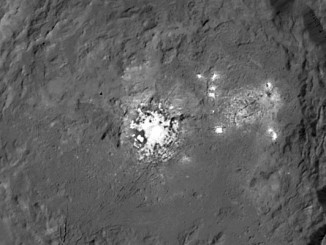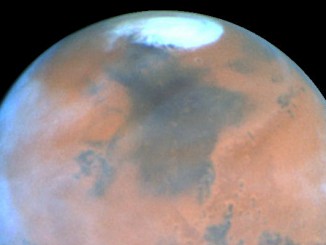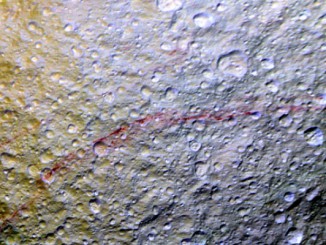
Rosetta’s first peek at comet 67P’s dark side
Since its arrival at comet 67P/Churyumov-Gerasimenko in August 2014, ESA’s Rosetta spacecraft has been surveying the surface and the environment of this curiously shaped body. Now that the comet is experiencing a brief, hot southern hemisphere summer, its south polar regions have emerged from almost five years of total darkness and it has been possible to observe them with other Rosetta instruments.









